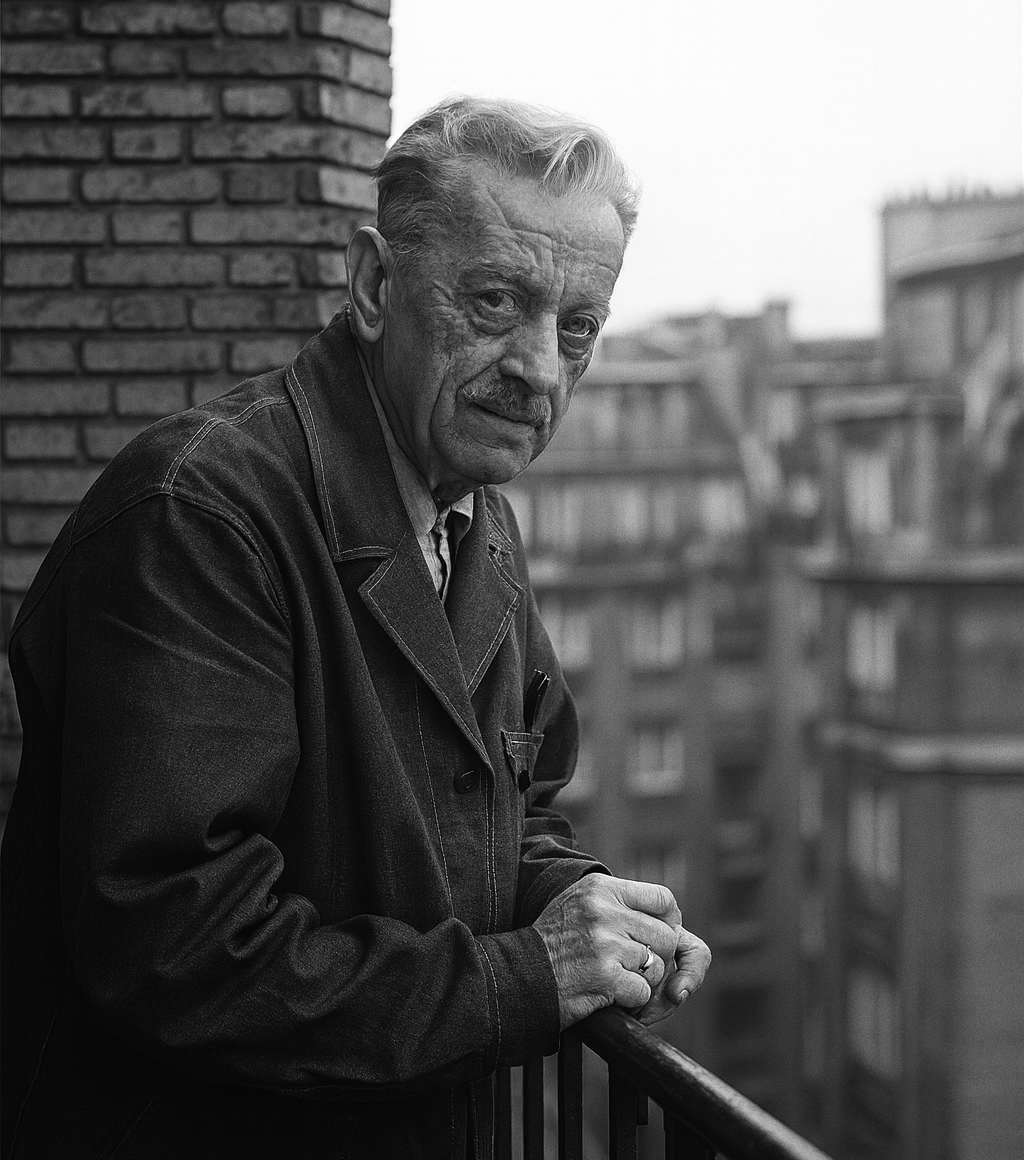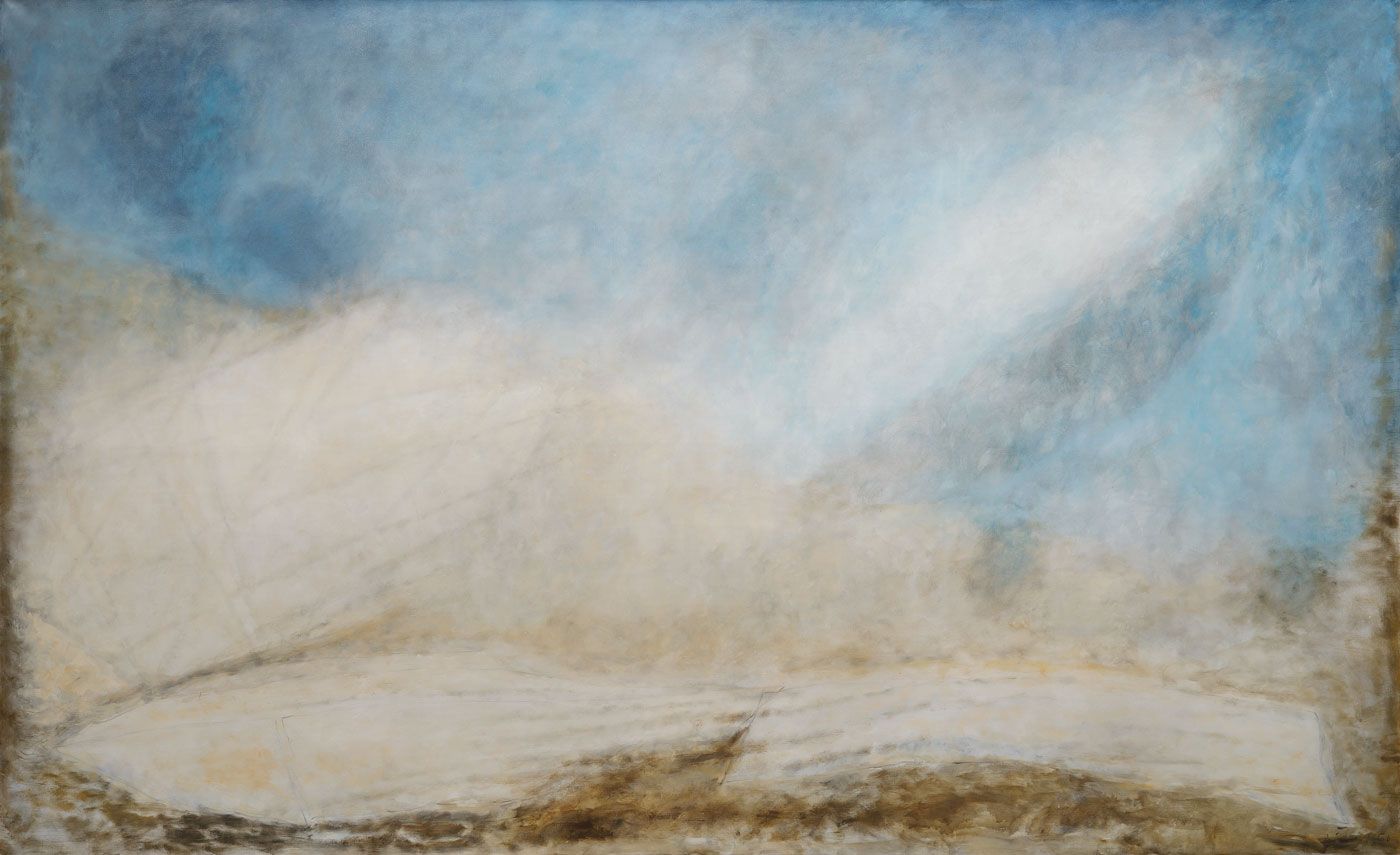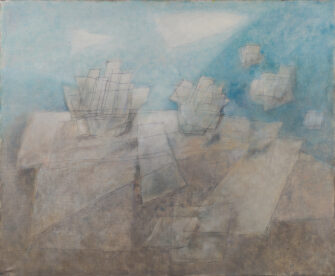Josef Šíma’s Auction History and Market Performance

As Šíma’s market reaches new heights, Aurora & Athena explores his artistic journey, legacy, and record-breaking auction history, culminating in the rare offering of this poetic work in our November 8, 2025 Fine Art Auction.
Índice
Josef Šíma (1891–1971), a Czech modernist painter who spent much of his career in Paris, has seen surging auction results in recent years. His works – especially important oils from the 1920s–30s and late-career abstracts from the 1950s–60s – have achieved record-breaking prices at major international auctions and in his native Czech Republic.
This reflects a strong appreciation trend for Šíma’s art, with collectors eagerly vying for the relatively few works that come to market. Below, we outline notable auction sales, price recordsy el market outlook for Šíma’s paintings, including how collectors and institutions perceive his value and rarity.
Notable Auction Sales and Record Prices
Coming to auction in November 2025, Poesía de la luz (1961) marks the latest major appearance of a Josef Šíma painting on the international stage.
Offered by Aurora & Athena with an estimate of €20,000–30,000, this ethereal oil on canvas captures Šíma’s fascination with crystalline light, geometry, and spiritual abstraction.
Signed and dated, and held in a private European collection for decades, it presents a rare opportunity to acquire a mature-period Šíma painting fresh to market.
Recent record-setting sales of paintings by Josef Šíma underscore his rising market value:
Země” (Earth, 1960) – Šíma’s monumental late painting Earth sold in November 2024 for CZK 60.48 million (about €2.5 million) at Galerie Kodl in Prague (english.radio.cz).
Este world auction record for Šíma was achieved after an intense 11-minute bidding battle, with the hammer price jumping fivefold from a CZK 10 million starting bid (galeriekodl.cz).

The final price (including fees) placed Earth among the ten most expensive artworks ever auctioned in Czechia (english.radio.cz). Šíma’s Earth (1960), his largest painting, fetched CZK 60.48 million (~€2.5 million) in 2024 – a new auction record for the artist.
“Jour du royal bleu” (Day of Royal Blue, 1968) – This luminous abstract from Šíma’s late period set an artist record at Christie’s. It sold for €806,400 (≈$870,000) at Christie’s Paris on June 7, 2023 (noticias.artnet.com). The price was more than double the high estimate, underscoring strong demand (noticias.artnet.com). At the time, this was touted as a record for Šíma’s work at auction internationally.
“ML (Vejce/Rovnováha)” (Egg – Balance, 1927) – An early Surrealist-era canvas (often referred to simply as “ML”) achieved CZK 36.18 million (≈€1.4 million) in October 2018 at a Prague auction (1. Art Consulting) (novinky.cz). This was Šíma’s auction record prior to the Earth sale, and it remains one of his highest prices. Notably, the same painting had sold in 2004 for just CZK 7 million, illustrating a dramatic increase in value over 14 years (artplus.cz).
“Ateliér” (1934) – Sold for CZK 28.8 million (~€1.1 million) at Galerie Kodl in November 2016 (artplus.cz). This painting had been absent from public view since 1936 and emerged on the market shortly after a major Paris sale of another Šíma work. Its strong result contributed to a banner year for Šíma’s market in 2016, when 22 of his works were auctioned (cumulatively over CZK 100 million in sales).
“Ve čtyři hodiny odpoledne” (Four in the Afternoon, 1929) – Fetched CZK 22.88 million (~€0.9 million) at Adolf Loos Auction House in Prague (Nov 2016). This highly exhibited 1920s work was originally a gift from Šíma to poet P. J. Jouve, and its sale marked one of the top Czech auction results that year (artplus.cz).
“Troska” (The Wreck, 1932) – Achieved CZK 21.51 million (≈€721,500) at Christie’s Paris in June 2016 (artplus.cz). This sale made Šíma only the third Czech artist (after František Kupka and Toyen) to break the CZK 20 million threshold at auction. The painting was bought by a Czech collector, reflecting a trend of Czech buyers repatriating Šíma’s works sold abroad.
Other sales: Léda s labutí (Leda with Swan, 1938) brought CZK 17.2 million in 2008 (artplus.cz), and mid-size late landscapes regularly fetch six-figure sums. For example, Double paysage (1954) sold for €295,500 at Sotheby’s Paris in 2017 (arte.salon), and Krajina v Brie (Landscape in Brie, 1950) realized €400,000 in a French regional auction in 2025 (irozhlas.cz). Even smaller works on paper by Šíma often exceed estimates, averaging around $12k in recent auctions (mutualart.com).
Market Trends and Price Appreciation
Šíma’s auction prices have shown a steep upward trajectory, especially in the past decade. In the early 2000s, his works traded for at most a few million crowns (a 2002 sale maxed out at ~CZK 3.5 million (artplus.cz)). By the 2010s, however, Šíma joined the top tier of Czech art: 2016 was a breakthrough year with multiple sales above CZK 20 millionartplus.cz, and his auction turnover in that single year exceeded CZK 100 millionartplus.cz. The momentum continued post-2018, as his pre-war masterpiece “ML (Egg)” reset the record at CZK 36 millionnovinky.cz, and has culminated in the 2023–2024 spike where Jour du royal bleu y Earth both shattered previous highs.
Recent data confirms strong appreciation: According to an analysis by Art+, the entry price for a “Top 10” Czech auction painting climbed from ~CZK 18.9 million a decade ago to over CZK 60 million today (forbes.cz). Šíma’s Earth sale in 2024, which took the 10th spot on the all-time Czech list at CZK 60.5 million, exemplifies how values have surged since the Covid era. Experts note that art markets benefited as investors sought inflation-resistant assets during the crisis, driving up prices for blue-chip artists (forbes.cz). In fact, the Czech art market saw record turnover in 2022 and 2023, and Šíma’s works rode that wave of growth.
Another notable trend is the rising interest in Šíma’s post-war abstract works, which were once undervalued relative to his interwar paintings. In recent years these later works have greatly narrowed the price gap. For instance, Jour du royal bleu (1968) – a 1960s canvas – achieved €806k in Paris (noticias.artnet.com), nearly matching the levels of his 1920s–30s pieces. Similarly, a smaller late painting Slepá ulička I (1968) sold for over CZK 16 million in 2023 at a Prague auction (artplus.cz), setting a domestic record for Šíma’s post-war category.
In some cases, collectors have flipped late Šíma works for quick gains: the painting Kamenné nebe (1963) was bought at Christie’s Paris in mid-2022 for €365k and resold in Prague in early 2023 for CZK 13 million (artplus.cz) – roughly a 40% increase in less than a year. All these signs point to heightened demand and accelerating appreciation for Šíma across his oeuvre.
Collector and Institutional Perspectives
Collectors today view Josef Šíma as one of the blue-chip Czech modernists, and his paintings are sought after both as cultural trophies and long-term investments. Notably, Czech collectors have shown a strong appetite for Šíma’s art, often bidding aggressively to bring works back to the Czech Republic. Of the six highest-priced Šíma paintings auctioned in France, at least four were acquired by Czech buyers according to Art+ research (artplus.cz).
For example, the Troska (1932) sold at Christie’s Paris in 2016 was purchased by a Czech bidderartplus.cz, and more recently a French sale of three Šíma canvases in January 2025 saw at least one local Czech buyer in the mix (irozhlas.cz). This pattern suggests that domestic collectors place significant cultural and financial value on Šíma’s works, repatriating them as prized assets.
Institutions likewise hold Šíma in high esteem. His paintings are found in major museum collections (he has been “collected by a major institution” according to Artsy’s market signals (artsy.net)), such as the National Gallery in Prague and Musée National d’Art Moderne (Centre Pompidou) in Paris.
Exhibition history underscores this institutional recognition: Šíma was the subject of major retrospectives (e.g. Paris 1968, Prague 1968) and numerous museum shows. In 2014, Prague’s Museum Kampa organized “Cesta za světlem” (Journey to the Light), highlighting his late works – the show notably drew entirely from colecciones privadas, showcasing works that had never been exhibited in Czechia before (ct24.ceskatelevize.cz).
One centerpiece was Země světlo (1967), a painting that had been owned for decades by French collector Jean-Bernard Pontalis and was “recently auctioned in Paris”, finally returning to a Czech collection after years abroad (ct24.ceskatelevize.cz). This example illustrates that many of Šíma’s key works were long held in private hands (often overseas) and are only now re-entering public view via auctions or loans – a testament to their rarity on the market.
Market observers consider Šíma’s art to have solid potencial de inversión, in line with other top Czech modernists like Kupka or Toyen.
A Czech art investment report noted that these are “renomované autory” – renowned artists represented in both private and public collections – and “stálice v aukčních síních”, meaning stalwarts of the auction scene (magazin.portu.cz). In practical terms, Šíma’s better works have yielded steady long-term gains (on the order of mid-single-digit percentage annual growth in value, according to Art+ data) (forbes.cz).
That said, experts remind buyers that art is a long-horizon asset with lower liquidity; the true motivation for most collectors remains the “emotional and intellectual value” of owning a masterpiece (forbes.cz). Šíma’s paintings, rich in poetic and metaphysical imagery, certainly deliver on that front – which, combined with their scarcity, underpins their enduring market appeal.
Rarity and Holdings of Šíma’s Works
Paintings by Josef Šíma are relatively rare at auction, as a large portion are held in museum or long-term private collections. He was a prolific artist, but many pieces, especially from his Paris years, were dispersed into French collections or kept by the artist’s family and friends. As a result, the supply of top-tier Šíma paintings on the open market is limited. Auction databases show on average ~50–60 Šíma lots offered annually worldwide (including works on paper), with a sizeable fraction unsold (artsy.net) – indicating that buyers can be selective and that not every minor work finds a taker. When an exceptional work does appear, it is treated as an event.
For instance, the Earth painting from 1960 was not only Šíma’s largest canvas ever, but also the largest Šíma piece ever auctioned in Czechia, which contributed to the vigorous bidding and record price (artplus.cz). In general, his pre-war oils surface infrequently, and many of those that set records in recent years were fresh to the market after decades (e.g. ML (Egg) reappearing after 14 years (artplus.cz), or Ateliér coming to auction after being hidden since the 1930s (artplus.cz).
Ambos public and private collections today hold significant Šíma works, reducing market turnover. Several of his iconic paintings reside in Czech national institutions (the National Gallery in Prague owns works like The Yellow Spectre y Paisaje; the Moravian Gallery in Brno and Museum Kampa also have notable pieces). In France, museums such as Musée d’Art Moderne de Paris have exhibited Šíma, and his work was included in major Surrealist and modern art shows. On the private side, prominent collectors (e.g. the Waldes family historically, and more recently Czech collectors like Vladimír Železný) have acquired Šíma’s paintings for their collections, often loaning them for exhibitions.
Because so many of Šíma’s most important paintings are “locked away” in institutions or collections, the opportunity to buy one is rare – which drives up competition and prices when a masterpiece does hit the block. This scarcity factor was explicitly noted during the 2024 Kodl sale: bidders “did not want to miss the chance to obtain Šíma’s largest canvas” ever seen at auction (artplus.cz). Likewise, specialists have pointed out the “small miracle” of any top Czech modernist work coming to market nowadays, given how tightly held many are (img.ihned.cz).
En resumen, Josef Šíma market has evolved from modest beginnings into a robust segment characterized by record-breaking prices and enthusiastic collector interest. His paintings have appreciated markedly, with auction records leaping from the low millions CZK in the early 2000s to well into the tens of millions today. Major auction houses like Christie’s (Paris) and leading Czech houses (Galerie Kodl, Adolf Loos, etc.) have all set new highs for Šíma’s works in recent years, reflecting his status as a cornerstone of the Czech art market.
Collectors and institutions alike esteem Šíma as a seminal figure of European Modernism – his works are viewed as culturally important and financially sound, often being held in prestigious collections. With most masterpieces in private or public hands and relatively few available, Šíma’s art is considered both rare and valuable. The consensus is that his market will remain strong, underpinned by national pride, limited supply, and the profound artistic quality that continues to captivate new generations of collectors.
